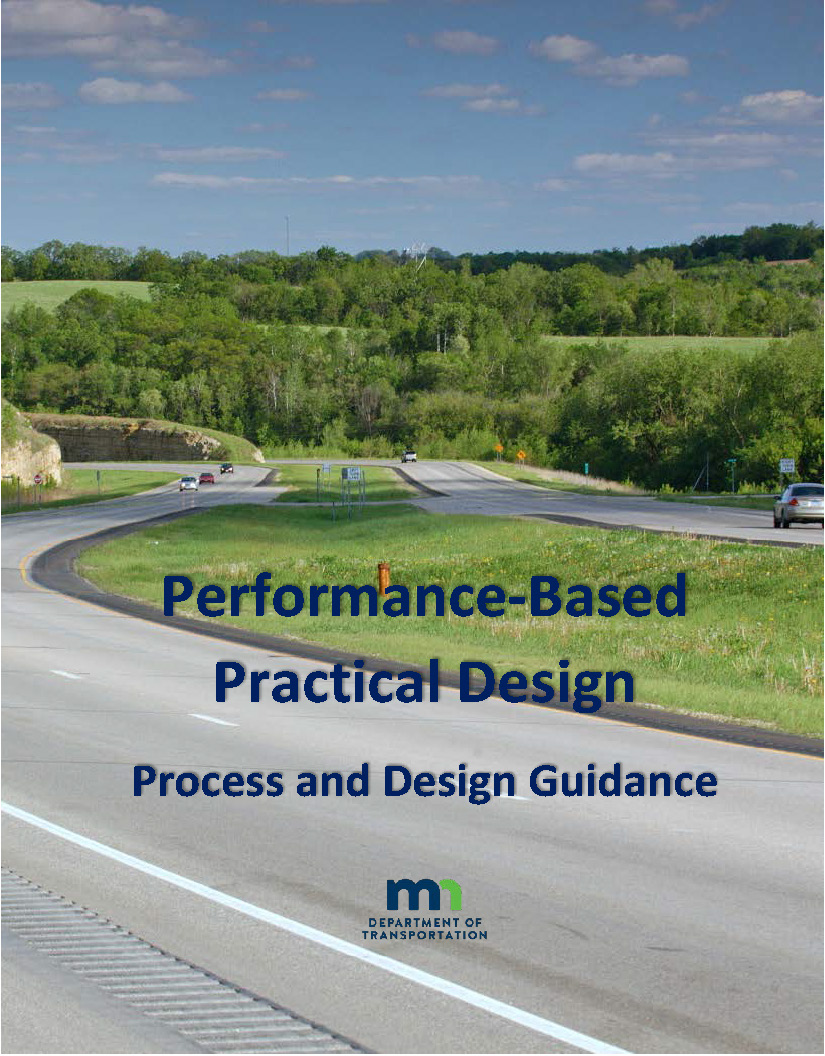Performance-Based Practical Design (PBPD)
Performance-Based Practical Design (PBPD) is an approach to road and street engineering that “right sizes” projects in order to achieve the best transportation system we can afford. PBPD uses newly available data and methods to address problems and achieve project goals more reliably and efficiently than has been possible in the past. Recently-developed methods to predict expected safety have been a breakthrough in road design, allowing comparison of design options in how they balance different aspects of performance and their respective costs.
 PBPD is MnDOT’s prescribed design practice. The agency directs engineering staff to apply its principles and processes on every project. The PBPD Process and Design Guidance document (left) provides definitions, guiding principles, process steps, and new and revised design criteria. It’s intended as an everyday desktop reference and the first source that designers of MnDOT facilities should consult for insight and information.
PBPD is MnDOT’s prescribed design practice. The agency directs engineering staff to apply its principles and processes on every project. The PBPD Process and Design Guidance document (left) provides definitions, guiding principles, process steps, and new and revised design criteria. It’s intended as an everyday desktop reference and the first source that designers of MnDOT facilities should consult for insight and information.
Performance-based design is best thought of as an outcome-based approach, where designs are tailored to achieving goals and objectives as defined by performance measures/characteristics. This contrasts with long-standing traditions of designing toward specified dimensions – i.e. a building code-style approach. Years of experience has shown that adherence to standards isn’t a reliable predictor of actual performance; instead, it’s necessary to study local conditions, needs and problems and design unique solutions to address them.
Design Flexibility
PBPD is a natural next step in Minnesota’s movement in the 21st Century toward a more flexible design approach. Wider ranges of standard practice and greater acceptance of non-standard design decisions are helpful in building facilities that are good fits to user needs and community contexts. We seek a balance of consistency and flexibility on projects and across the transportation system. This approach is interconnected with the established principles of Context Sensitive Solutions and Complete Streets, which themselves are outcomes-based – outcomes centered on the universal objectives of enhancing quality of life and public health.
